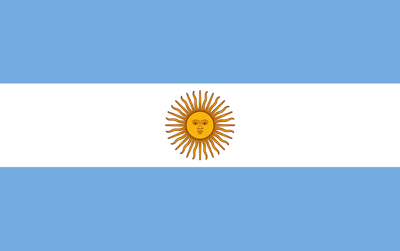Pakistan Local Cotton Market:
(The local and international cotton markets are facing significant challenges due to weather conditions, economic concerns, and fluctuating demand. Prices for raw and lint cotton have risen locally, but overall demand remains weak, and export viability is low. Both farmers and traders are navigating a complex market with uncertain prospects)
1- In the local cotton market, business activity was moderate due to the monsoon and rainy season. Buyers were hesitant to make purchases, anticipating further drops in local cotton prices. This scenario is tough for farmers who are in the midst of harvesting their crops, as the declining international prices create a challenging situation for them.
2- The prices of lint and raw cotton have surged by Rs 500 to 600 per 40kg due to crop damage and slow arrivals. Despite a downward trend in the international market and buyers opting for U.S. cotton imports, uncertainty persists. The local market is grappling with electricity issues and the non-viability of yarn exports.
3- As of 03.08.2024, Pakistan’s cotton arrival stands at 844,257 bales. The export/trader amount is 400 bales, and the textile mills have received 744,083 bales. The total stock is 99,774 bales, which includes 34,197 bales pressed and 65,577 bales of Phutti. Last year’s stock was 136,319 bales. This year’s flow is 402,216 bales, while last year’s flow was 570,631 bales. The total arrival last year was 1,428,638 bales. Currently, 268 factories are in operation.
4- ICE cotton prices dropped during the last week along with significant drop in the dollar index too. Weak US payroll data signaled economic concerns, leading to a crash in global equity markets and a decline in the dollar index. However, there are no signs of a revival in cotton demand, with prices consolidating between 66-70 cents. A rate cut and stable market dynamics were anticipated.
5- India’s cotton yarn trade was remained under pressure due to low demand and increased imports, leading to a drop and softness in prices. They also saw a decline in recycled polyester fiber and cotton comber prices, while recycled yarn prices stayed steady.
6- Last week, cotton prices in Punjab and Sindh showed slight firm to upward trend from
Rs 17,000 to Rs 18,200 per maund, (USC 0.75~0.80 lbs). In Sindh, cotton rate was Rs 17,000 to Rs 17,400 per maund, while in Punjab it ranged from Rs 17,400 to Rs 18,200 per maund. KCA up rs. 600 and reached from Rs 17,000 t0 17,600 Rs per maund, while PSF was same at Rs. 380 PKR/kg.
Local Yarn Market:
(Slow market sentiment was seen in local yarn market with stable price. It is expected that market will remain stable with consistent yarn prices. However, end-user demand and regional cotton price fluctuations will influence future market trends)
1- The local yarn market continues to see slow activity with stable yarn and local cotton prices.
2- Suppliers functioned with restricted inventory levels while contending with escalating energy and production expenditures.
3- PSF prices were decreased by Rs.5/kg dated 1st Aug 2024 in the domestic market, For next week it is expected to decline by further Rs 3~4/kg.
4- Faisalabad’s market exhibited sustained slow activity, particularly in viscose and fine-count yarn sectors, as cash flow challenges continued to hamper progress.
| Count | Price in Pak Rupees / 10 LBS | Price US$/Bale |
| 16/1 Carded Weaving | 3250 – 3350 | 470 – 485 |
| 20/1 Carded Weaving | 3400 – 3500 | 490 – 505 |
| 30/1 Carded Weaving | 3800 – 3900 | 550 – 565 |
| 20/1 Combed Weaving | 3950 – 4100 | 570 – 595 |
| 30/1 PC Carded Weaving 52:48 | 3300 – 3580 | 480 – 520 |
| 40/1 Combed Compact Weaving | 4530 – 4650 | 655 – 675 |
| 60/1 Combed Compact Weaving | 6000 – 6250 | 870 – 905 |
| 80/1 Combed Compact Weaving | 8100 – 8300 | 1170 – 1200 |
| 40/1 CVC Carded Weaving 60:40 | 4200 – 4300 | 610 – 620 |
Export Yarn Market:
(Export yarn market remained under positive business activity. Customers from different regions showed improved orders confirmations and we might see same sentiment in days to come)
1- Export yarn market showed betterment throughout the week. Customers from China and Europe remained in market and kept on checking prices.
2- Suppliers were firm in asking their prices and showed flexibility to close business in presence of firm bids.
3- There has been a handsome activity in domestic market which kept suppliers aside of panic selling in exports.
4- New cotton arrival is increasing and suppliers are buying cotton to cover their needs. However, cotton price is showing stability due to aggressive buying from spinners and expectation of short crop.
5- Chinese customers kept on checking prices and deals were also closed with selected brands where customers achieved their target prices. We might see improvement in business form China in days to come.
6- European customers remained active before closing for their holidays and decent numbers of enquiries were received. Business materialization was good too.
7- It is expected that the export market will receive substantial orders in days to come as demand is picking up
| Export Yarn Prices | ||||||||||||||||
|
Local Fabric Market:
(Firm trend with moderate activity was seen in local fabric market. In the coming weeks, we expect market to maintain a firm trend with a tendency to move upward)
1- The local fabric market remained sluggish, showing a firm trend with moderate activity in both narrow and wider-width fabrics.
2- Local buyers were unable to place bulk inquiries, resulting in a lackluster market with limited business materialization for both narrow and wider-width fabrics.
3- Most weavers are actively seeking inquiries to extend their current booking levels for narrow-width looms. However, they are comfortably booked for their wider-width looms until the end of September 2024.
Export Fabric Market:
(Average business activity was seen in export fabric market. The prices were stable despite the increase in the price of local cotton this week. The suppliers are expecting slow demand in the days to come)
1- The export fabric market has been experiencing a bit of a challenging period over the last couple of months.
2- Active business discussion was made by the Korean customers however, limited orders were placed mainly due to a 5~6% price gap.
3- Mixed trading activity was seen from China, Indonesia, Japan, Vietnam, and Bangladesh, with limited buying.
4- The cotton prices increased this week, but the fabric prices were stable due to stable yarn prices.
5- Supplies are booked until the end of August or early September, with onward deliveries.
6- The suppliers are raising their voice against high taxes, energy costs, and bank interest, which made challenging to run their business.
7- Limited number of inquiries were exchanged by European and American buyers, resulting in limited buying during the week under review.
8- Wider width suppliers are comfortable booking till the end of Sep ~ mid-October and offering onward deliveries.|
9- There is no change in prices, as these remained the same as of last week.
| Local and Export Fabric Prices
| ||||||||||||
|
Bed Linen and Towel:
(The HT industry in Pakistan is at a critical juncture. While it faces significant challenges due to high energy costs and narrow profit margins, there is still strong demand from European markets. To harness these opportunities and ensure the industry’s sustainability, immediate government intervention is necessary. By implementing tax reliefs, reducing energy tariffs, and fostering business-friendly policies, the government can help the HT industry navigate these challenges and achieve long-term growth)
1- Pakistan’s home textile (HT) industry is facing an existential threat due to the escalating energy costs. The current tariffs are the highest in the region, putting immense pressure on domestic manufacturers. Many production houses are operating with minimal profit margins, just breaking even, or even incurring losses. This precarious situation is unsustainable and could lead to widespread industrial shutdowns if not addressed promptly.
2- The high energy tariffs are unsustainable and are severely impacting the profitability of the HT industry. These costs are making it difficult for manufacturers to maintain their operations.
3- The industry is currently surviving on thin margins and break-even points. This is not a sustainable model and could result in long-term damage, potentially leading to the closure of production units.
4- Despite these significant challenges, there is still a considerable demand from European markets. The HT industry continues to receive a steady flow of inquiries from Europe, indicating that there are business opportunities available. This shows that the market is still open to order confirmations and bookings, but the industry needs immediate support to capitalize on these opportunities.
5- To ensure the survival and growth of the HT industry, it is crucial for the government to step in with supportive measures. The following actions are essential:
- Providing tax reliefs can offer financial respite to production houses, enabling them to reinvest in their operations and improve their profitability.
- Reducing energy tariffs is vital to lower the operational costs for manufacturers. This will enhance their competitiveness and sustainability in the long run.
6- Introducing business-friendly policies will create a more supportive environment for the HT industry. This includes simplifying regulatory procedures, offering incentives for innovation, and fostering a business-friendly ecosystem
Garments:
(Because of global economic uncertainty, garment demand is often slow but it’s going towards improvement. Orders from the EU and the US were increased. The denim industry anticipates orders for sustainable products during the fourth quarter)
1- Pakistan Garment Industry is facing challenges to fill their hundred percent capacities.
2- Mostly export customers are not placing orders in bulk like for the full season as they also do not anticipate a healthy demand from retailers.
3- Orders are being placed in chunks considering urgent demands only.
4- Overall garment factories are covered from sixty to seventy percent of their capacities and striving to get more orders to fill their non utilized capacity.
5- Some brands from EU and US are working on their FW25 developments. On average factories have space to offer deliveries from Oct onward depending upon the types of garments and embellishments required. .
Crude Oil:
1- Crude Oil prices opened at USD 75.81 a lower level as compared to last week’s closing figures. in this week, crude oil prices showed mix trend and closed on the lower side by the end of the week.
2- In the last day of the week, Crude Oil prices closed at USD 73.52 with a decrease of 2.29 USD cents as of the opening figure of the week
| Opening of Week | Closing Of Week | Change | |
| Price | 75.81 | 73.52 | -2.29 |
Exchange Rate:
1- In last week values of Pak rupee appreciated against US Dollar’s, other major currencies showed mix trend in both interbank and open markets.
2- At the end of week, Euro closed on a positive note with figure of 1.09 and British Pound also closed on positive note with figure 1.28 against USD.
| Selling | Buying | |
| LC Sight | 276.35 | 276.30 |
| LC 120 Days | 261.82 | 261.77 |
| Open Market | 281.08 | 275.76 |
New York Cotton Future:
The New York Cotton futures started the week higher than the previous week’s closing figures. However, NYCF showed a mixed trend this week and closed on the lower side by the end of the week.
1- October 2024 closed at 67.18, experiencing a drop of 33 points from the previous week.
2- December 2024 closed at 68.25 showing a lower trend of 96 points from the previous week.
3- March 2025 closed at 69.87, a drop of 104 points from the previous week.
4- May 2025 closed at 71.14, a decrease of 115 points from the previous week.
Liver Pool Indices:
Liverpool Index A was opened at 79.30 on slightly higher levels from the previous week of closing figure.
In this week Index “A” showed a mixed trend and closed on the higher side by the end of week.
At the last day of the week, LPI “A” closed at 80.35 with an increase of 105 points..
| Opening of the Week | Closing of the Week | Change | |
| Index A | 79.30 | 80.35 | 1.05 |







